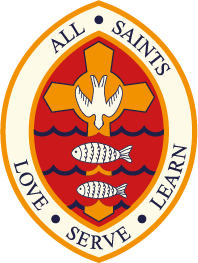Technology: Design Technology
Subject Leader: Mrs L Hennigan
The 3D Design curriculum has been designed to allow all students to be creative and imaginative when designing and making products that solve real life problems. It aims to build on student knowledge, understanding and skills while also teaching them about the technical understanding of a developing world to produce high quality prototypes and products for a wide range of users.
Students will study a wide range of materials including wood, acrylic and metal to name a few. They will also develop an understanding of systems, programmable components and mechanisms to understand how they work and are used in everyday life. The Design Technology curriculum has been designed to inspire, challenge and motivate every student, no matter their level of ability, while supporting them in developing their creative skills.
Key Stage 3
-
Year 7- Cultural Wooden Slot Toy Project. This project is introduced in Year 7 and builds on the skills students will have learnt at KS2. Students will produce a cultural wooden slot toy which will help them build skills using tools and machinery they will probably not have used or seen at KS2 Technology. This will enable students to know how to accurately,safely and correctly use tools, equipment and machinery moving forward into Year 8.
Year 8 – Pop Art Project. This project builds upon the skills the students will have learnt in Year 7. Students will look at 4 famous Pop Art artists and incorporate their work to produce either a jewellery or wall feature 3D practical outcome using a range of new materials, tools and machinery. It will also combine some Textiles practical work to make it more creative and unique.
Year 9- Dragonfly/ Beetle Project. This project continues to build upon the skills and knowledge the students will have learnt in Year 8. Students will look at a 3D insect artist called Christi Friesen and produce an insect in her style using a wide range of new materials and techniques including a LED light. Students will also look at how levers and mechanisms work to produce a paper version of a dragonfly using a range of materials and surface decoration.
Key Stage 4
At Key Stage 4 students can choose to study AQA GCSE Art and Design: Three-Dimensional Design. This course provides students with a range of creative, exciting and stimulating opportunities to develop and explore their personal interests in 3D Design. Students will create designs and products for architectural design, sculpture, ceramics, product design, jewellery and body adornment, interior design, environmental / landscape / garden design, exhibition design, 3D digital design and designs for theatre, film and television. Throughout their work, students will apply knowledge and understanding on the way sources inspire the development of ideas relevant to 3D Design through cultural, social, historical, contemporary and environmental issues where necessary to produce a personal response. The GCSE course has two components, a portfolio and an externally set assignment, culminating in a 10-hour supervised practical exam. Students will complete three portfolio projects using the following themes to produce a creative and meaningful outcome: The GCSE course has two components, a portfolio and an externally set assignment, culminating in a 10-hour supervised practical exam. Students will complete two portfolio projects using the following themes to produce a creative and meaningful outcome:
-
- Insect’s project
- Materials/ Human figure project
What can I do with a Design Technology qualification?
A GCSE in 3D Design is not only for people who wish to take their studies further or pursue a career in technology and the creative arts. It also develops your ability to work independently, think creatively and solve problems. These are important qualities whether applied to your professional or personal life, skills which colleges, universities and employers are looking for when selecting from a group of applicants. Such a qualification can lead to careers in, but not limited to, product design, interior design, landscaping, manufacturing, engineering and architecture.
